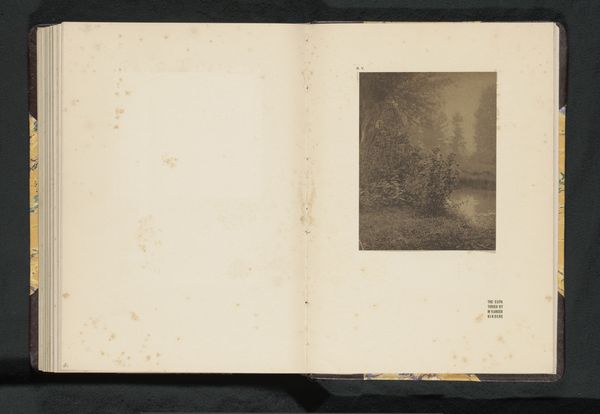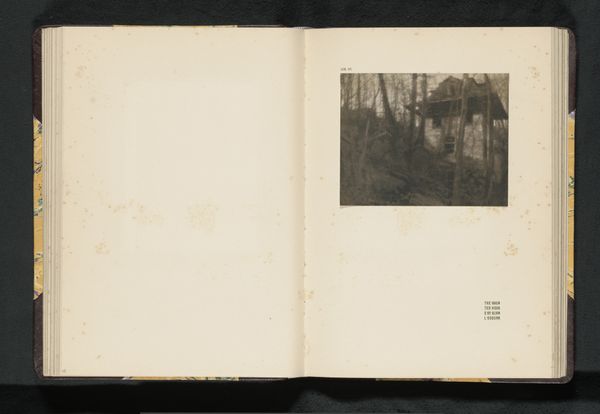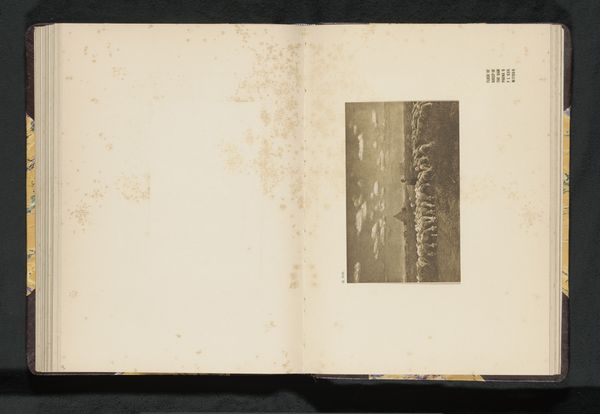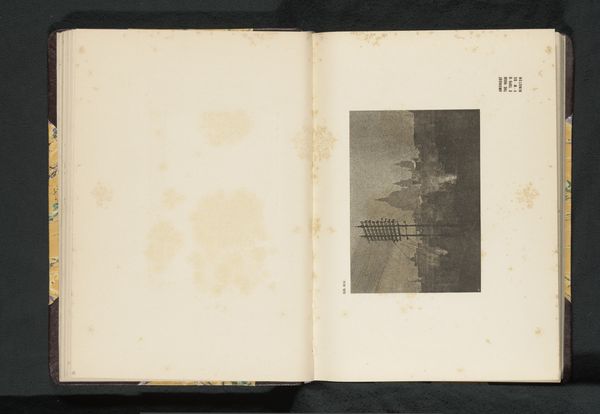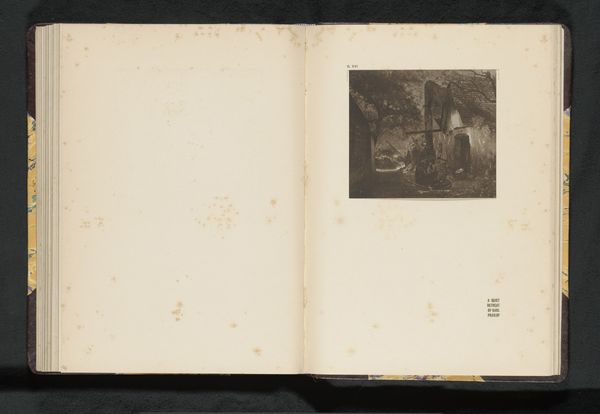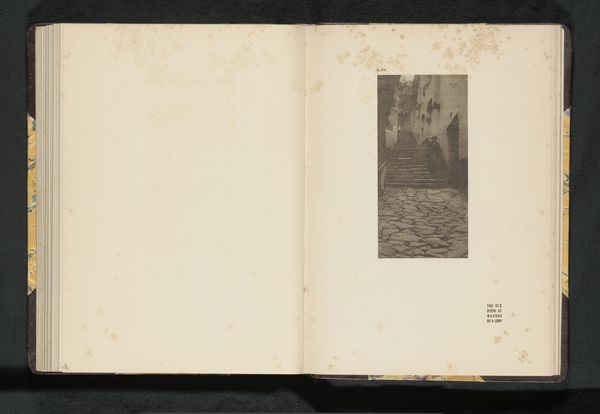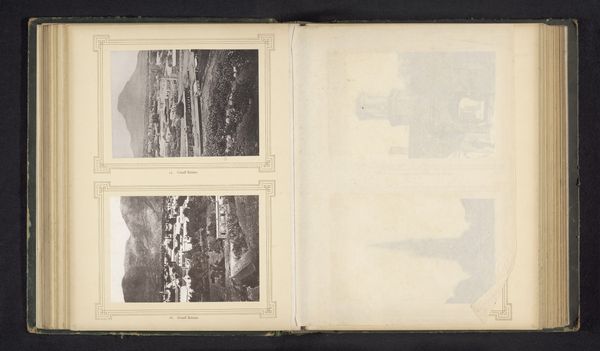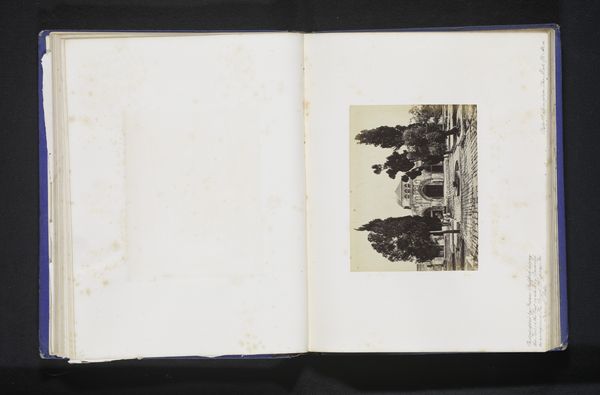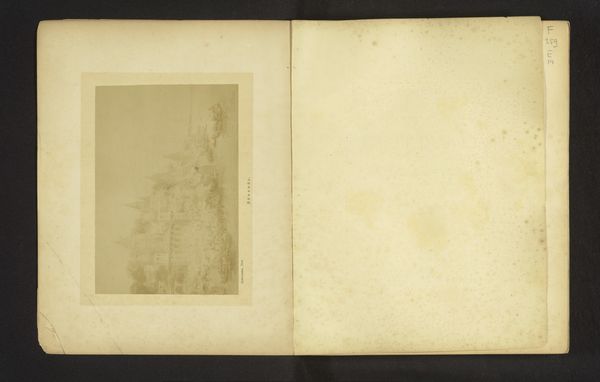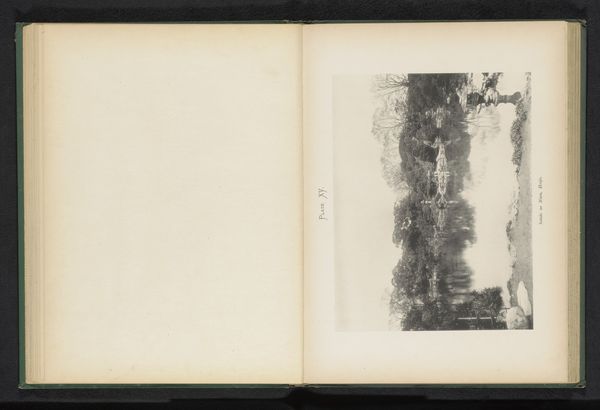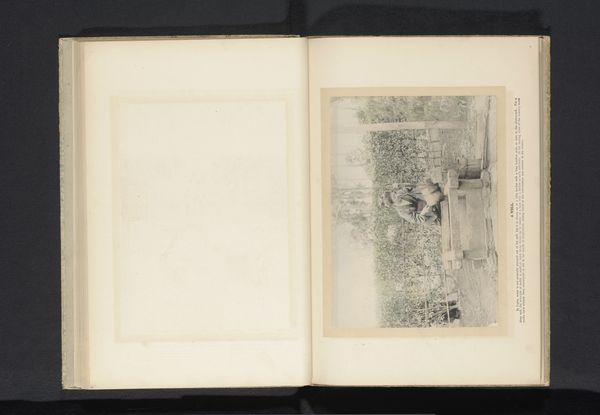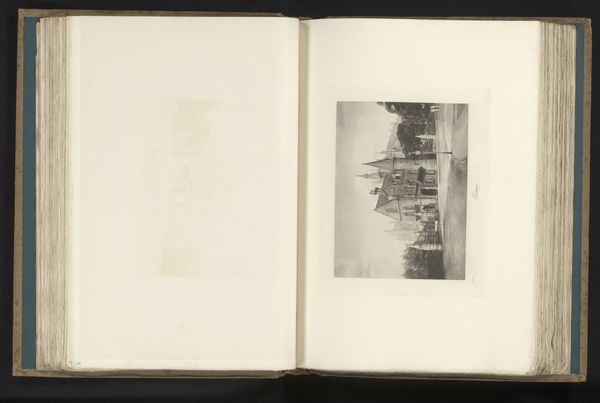
print, photography, gelatin-silver-print
# print
#
landscape
#
photography
#
forest
#
gelatin-silver-print
Dimensions: height 106 mm, width 125 mm
Copyright: Rijks Museum: Open Domain
Curator: Here we have Marcel Vanderkindere's "Bosgezicht met water," which translates to "Forest view with water," a gelatin silver print dating back to before 1905. Editor: It strikes me immediately with its serene, almost haunting quality. The contrast between the dark trees and the light reflecting off the water creates a powerful sense of depth and quietude. Curator: Vanderkindere, active during a period of significant social and political upheaval, often used landscapes to explore themes of societal change and humanity's relationship with nature. His works are less about capturing idyllic scenes and more about prompting reflections on our place within the natural world. Editor: Formally, the composition is quite striking. The verticality of the trees is almost overwhelming, countered only by the horizontal plane of the water. The tonal range is limited, focusing the eye on the texture and grain of the print itself. There's a reduction to essentials, an attempt, I think, to reveal the core structural components of the scene. Curator: Consider also that photography, particularly landscape photography, in the late 19th and early 20th centuries was heavily implicated in colonial projects. Artists were often tasked with producing romanticized, idealized versions of colonized lands. Vanderkindere, while working within this tradition, adds a layer of critical self-awareness, presenting nature not as a resource to be exploited, but as an independent entity with its own intrinsic value. Editor: And the choice of black and white further contributes to this. It distills the scene, stripping away the superficial allure of color, forcing us to confront the underlying forms. It is like removing layers of makeup from the landscape, presenting it raw and essential. Curator: Absolutely. We have this intense focus on how environments affect, and in some cases, directly enable communities or cause harm. Editor: Reflecting on this piece, it has taught me to see a photograph as more than just a record of something seen. It's a considered statement on form, tone and intention. Curator: And I would argue it shows how artists like Vanderkindere, working at the turn of the century, were keenly aware of their place in larger sociopolitical dialogues and how we continue that conversation through photography and all artwork.
Comments
No comments
Be the first to comment and join the conversation on the ultimate creative platform.
